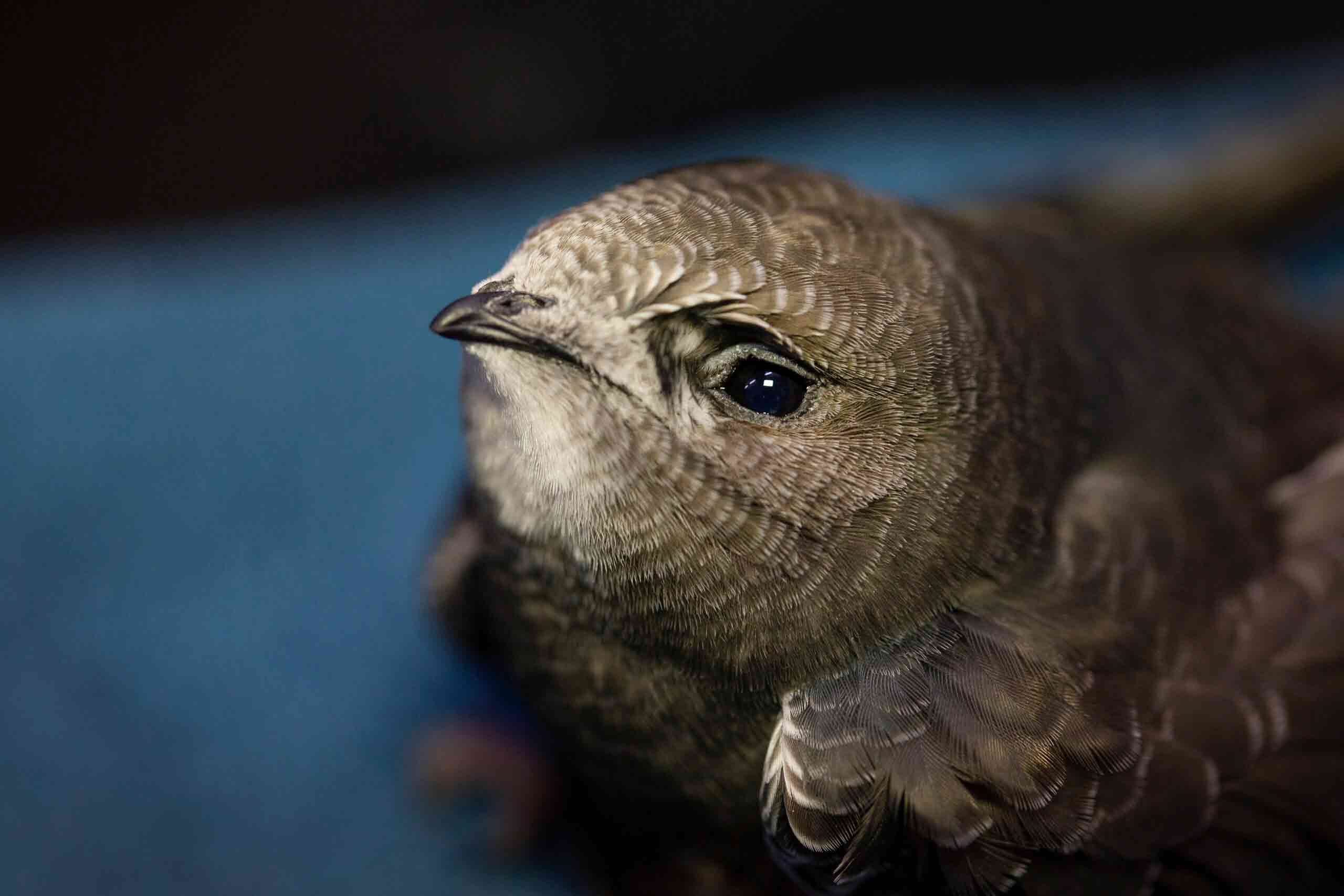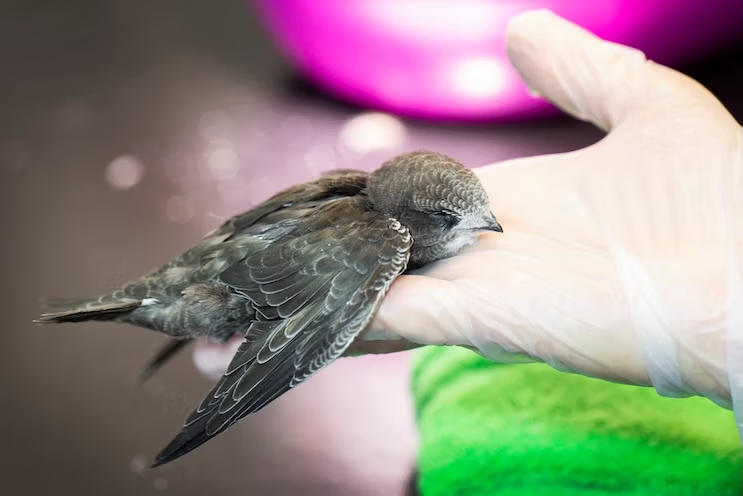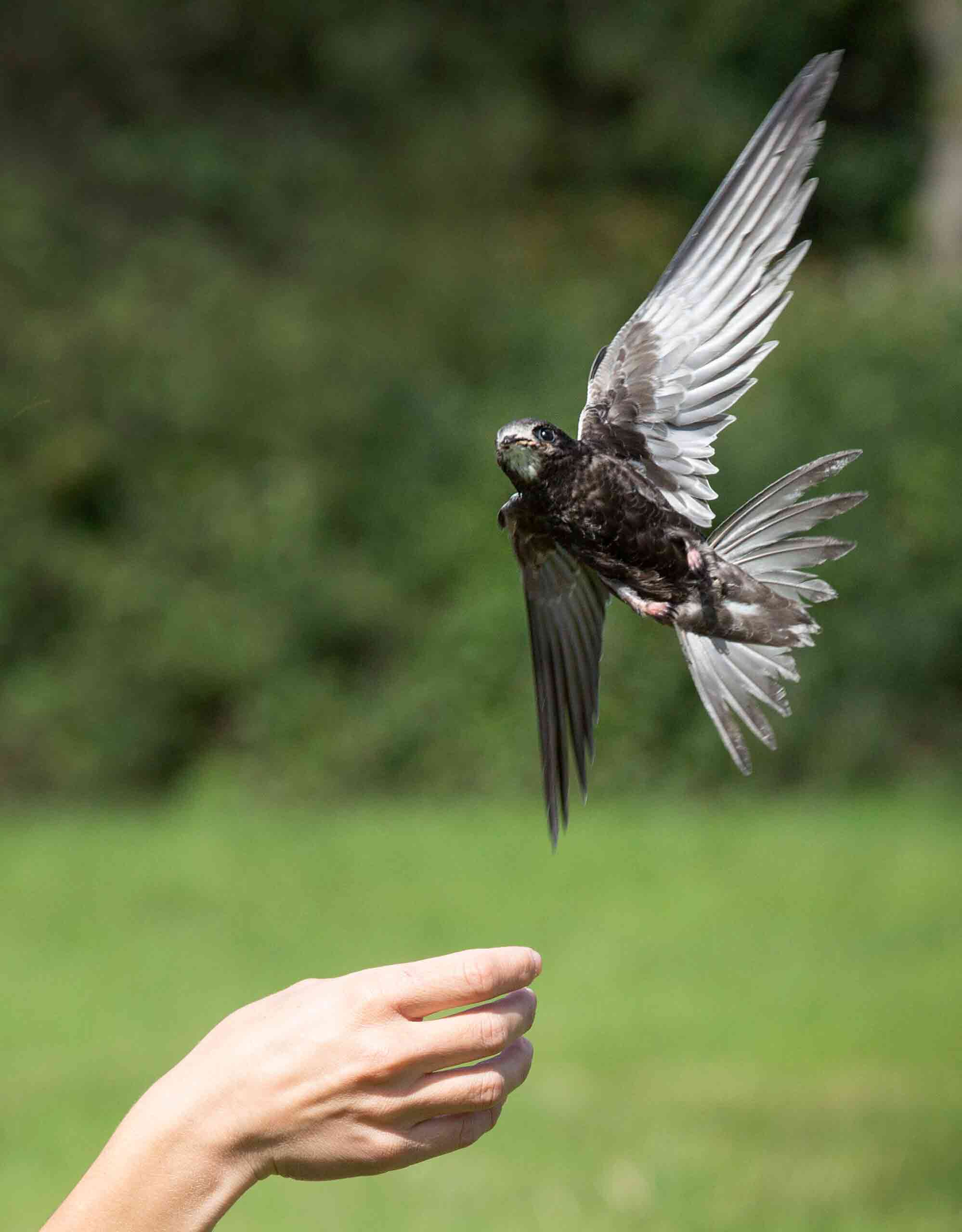Common Swift
Apus apus
Life History
Length: 16-17cm
Wingspan: 42-48cm
Weight: 36-50g
Diet: Flying Insects
When to see them: May to August
Behaviour: They eat, sleep and drink on the wing, only landing to breed.
Migratory distance: They travel over 3000miles to and from the African continent
UK breeding population: 59,000+ pairs
UK conservation status: RED

About
As a member of the Apodiformes family, the common swift is an acrobat of the sky, as well as being the fastest bird in level flight, reaching a top speed of 69.3mph!
One of the UK’s migratory species, the common swift spends our winters in Africa, before arriving back in the UK around April, spending their summer with us, raising young and for 1st year swifts, scoping out possible nest sites for the following year.
Eating, drinking, sleeping, and mating on the wing, these stunning little birds have been recorded to stay in the air for up to 10 months! That’s 10-months without landing.
How do they do this? Well, whilst they make use of thermals and winds to help carry them, they are also able to shut down one half of their brain, allowing it to rest, this is known as unihemispheric slow-wave sleep.
But how do we know this, well thanks to some swedish biologists using radar to track invividual birds. The birds fly up to around 10,000ft where they then shut down half their brain, continually correcting the wind drift so they wake up where they fall asleep. So cool!
Their Decline
The common swift is listed as red, the highest conservation priority, and requiring urgent action.
Their decline is reportedly due to the increasing pressures on nest and food availability, a direct result of changes in infrastructure and farming practices.
With preference for nesting in small gaps of houses and churches, the increase in property renovations, and removal of soffit gaps has reduced the number of nesting sites available for the species.


How you can help
There are a number of simple ways you can help swift numbers improve:
> Put up Swift Nest Boxes.
> Incorporate Swift bricks into new build properties.
> Plant wild flowers to encourage invertebrate numbers.
> Submit Swift sightings to national surveys.
> Keep a note for a local wildlife rescue in case you find a grounded or injured Swift.
If you find a grounded Swift:
A healthy Swift is capable of taking flight from the ground, if they don’t do this when approached, gently pick the swift up and place it in to a secure box.
Contact your closest wildlife rescue to ensure the swift receives the correct care.
Frequently Asked Swift Questions
I have found a swift on the ground, what should I do?
If you’ve found a grounded swift, which is quite common after their long migration, contact your local wildlife rescue as it most likely will need to be offered specialist supportive care.
Do not ever throw a swift in the air, if trying to release. They can take off from the ground, if they don’t then they need to be taken to a specialist carer as soon as possible.
Swifts require a specialist diet and only eat on the wing, as a result they need specialist trained feeders to support them prior to release.
I've found swiflets (young swifts) nesting in my roof, what should I do?
If you’re able to, please leave them. This red-listed species is struggling to nest-site losses, and thus if you are lucky enough to have the species nesting in your eaves, please allow them to stay. The parents will continue to care for the swiftlets
I've found young swifts fallen from their nest, what should I do?
If you’ve found hatchling or nestling swifts on the ground, please contact your local wildlife rescue as soon as possible. They will require specialist care and do not eat from bowls etc, like other birds do.